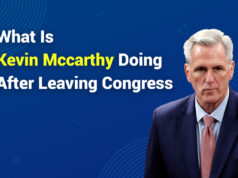Understanding how power is divided in the United States is crucial to interpreting laws, governance, and citizens’ rights. The keyword in question—”Which statement is an accurate description of the American federal system?”—is one many students, researchers, and curious minds frequently encounter in civics, government studies, and political discourse. This question isn’t just about academic theory; it reflects real-world implications on how laws are made, enforced, and interpreted across national, state, and local levels. In this comprehensive article, we will explore the American federal system in detail, breaking down how it works, its historical roots, its strengths and weaknesses, and what makes it unique compared to other forms of governance.
The goal is to answer the central question: Which statement accurately describes the American federal system? We will address various perspectives, support our analysis with historical and legal references, and break the topic into digestible sections. If you’ve ever wondered why your state law might differ from federal law, or how state governments function alongside Washington, D.C., this is the article for you.
Which statement is an accurate description of the American federal system?
The most accurate description of the American federal system is that it divides power between the national (federal) government and the individual state governments. Both levels have the authority to legislate and operate independently in some areas.
How Federalism Shapes the American Government Structure
The American federal system is built on a unique balance of shared power between the national government and the individual states. This concept, known as federalism, ensures that authority is not concentrated in a single entity. Instead, power is constitutionally divided to maintain national unity and local autonomy. Unlike a unitary government, where a central body governs all, or a confederation that gives ultimate control to regional governments, the United States operates under a hybrid model designed to prevent tyranny and promote responsive governance.
The Founding Fathers deliberately established this system through the U.S. Constitution, which granted both federal and state governments distinct responsibilities. The Tenth Amendment safeguards state powers, ensuring that any authority not given to the federal government belongs to the states or the people.
This plays out in areas such as public education, where states set their own standards, and healthcare, where Medicaid programs differ by region. Interestingly, just as tools like an upside down text generator offer unique formatting, each state can shape its policies within federal boundaries. The Supremacy Clause ensures federal law overrides conflicting state laws, keeping the structure cohesive yet flexible.
Historical Origins and Evolution of Federalism
The evolution of American federalism is deeply rooted in the nation’s founding challenges and constitutional design. From early governance failures to modern legal interpretations, federalism has continually shaped how power is shared across government levels.
The Collapse of the Articles of Confederation
The origins of the American federal system stem from the failures of the Articles of Confederation, which created a loose alliance among the states with a weak central government. This structure proved ineffective in managing the economy, ensuring national defense, and maintaining unity. The federal government could not impose taxes, enforce laws, or regulate interstate commerce, leading to widespread dysfunction. These issues highlighted the urgent need for a more robust national government that could function effectively while preserving state sovereignty.
Establishing Balance Through the Constitution
The U.S. Constitution provided the structural solution by embedding federalism into its framework. It outlined enumerated powers for the federal government and allowed for implied powers via the Necessary and Proper Clause. Simultaneously, the Tenth Amendment reinforced state authority by reserving all undelegated powers to the states or the people. This deliberate division of responsibilities created a flexible system allowing centralized decision-making and localized control.
Defining Moments in the Development of Federalism
Key events have continuously shaped the federal-state dynamic. The Civil War underscored the Union’s indivisibility and reinforced the supremacy of federal authority. The New Deal era expanded the federal government’s economic and welfare policy role. During the Civil Rights Movement, the federal government enforced constitutional rights despite resistance from certain states. The Reagan administration later championed “New Federalism,” promoting decentralization and giving states more control over federal programs.
Contemporary Examples of Federal-State Dynamics
Modern instances of federalism in action include the legalization of marijuana in several states despite federal prohibition, varied approaches to public education standards, and divergent responses to national emergencies such as pandemics and natural disasters. These examples illustrate how states exercise policy independence while operating within a unified national system.
The Supreme Court’s Lasting Influence
Judicial interpretation has continually redefined federalism’s boundaries. Landmark Supreme Court cases have reinforced and occasionally limited federal power. McCulloch v. Maryland established the principle of implied powers and national supremacy. Gibbons v. Ogden affirmed federal authority over interstate commerce. More recently, NFIB v. Sebelius placed limits on federal power by ruling that states could not be compelled to expand Medicaid under the Affordable Care Act. Through these rulings, the Court has maintained its role as a key moderator of the federal system.
Features of the American Federal System
The American federal system is built upon key features that define the relationship between the national and state governments. These features establish a balance of power and ensure flexibility, accountability, and responsiveness to changing societal needs. Here are the core components that characterize federalism in the United States:
- Dual Sovereignty: The federal government and the individual states have constitutionally recognized authority. Each operates within its sphere of power, allowing for distinct roles in governance without complete dependence on one another.
- Enumerated and Reserved Powers: The U.S. Constitution explicitly lists the powers granted to the federal government, while the Tenth Amendment reserves all remaining powers to the states or the people. This division ensures state governments maintain authority over local issues.
- Checks and Balances: Federalism introduces a system of mutual oversight between levels of government. States can challenge federal overreach, while federal institutions can ensure states comply with national standards.
- Fiscal Federalism: Through grants-in-aid, the federal government influences state policies. These include block grants for general purposes and categorical grants for specific programs, shaping state priorities.
- Supremacy Clause: The Constitution ensures that federal law prevails when in conflict with state law, maintaining consistency across the country.
- Judicial Interpretation: The courts play a crucial role in interpreting disputes between state and federal powers, adapting federalism to evolving legal and political contexts.
Why Federalism Still Matters Today
Federalism continues to play a crucial role in the daily lives of Americans, shaping policies on education, transportation, healthcare, and climate action. Dividing power between the state and federal governments enables policies to reflect local values while maintaining national standards. The COVID-19 pandemic exposed both strengths and weaknesses of this system—states could craft localized responses, yet a lack of coordination revealed the challenges of fragmented strategies. Similarly, the post-Roe v. Wade legal landscape illustrates how states now wield significant control over deeply personal rights like abortion access. Federalism also encourages innovation, as states act as “laboratories of democracy,” testing different solutions to shared issues. However, this diversity requires effective leadership and collaboration to ensure that national interests are still served. Ultimately, federalism safeguards against centralized control and keeps governance closer to the people, making it an essential and evolving part of America’s democratic framework.
Common Misconceptions About the U.S. Federal System
Despite being a foundational element of American governance, federalism is often misunderstood. Below are five common misconceptions, clarified to provide a more accurate picture of how the U.S. federal system functions:
- The Federal Government Is Always Supreme: Many believe that federal authority always overrides state power. While the Supremacy Clause does ensure that federal law prevails in conflicts, states retain significant autonomy in areas not explicitly granted to the federal government, such as education and local policing. This balance is vital to the federalist structure.
- States Have No Role in Shaping National Policy: States are not passive federal actors. They influence national policy through their representation in Congress, by initiating or resisting federal mandates, and through legal actions that challenge federal decisions in court. States are critical stakeholders in the legislative process.
- Federalism Works the Same Way Globally: Federal systems vary across countries. For instance, Canada operates with a more centralized model, while Germany features stronger state involvement in national policy. The U.S. model is uniquely tailored to its Constitution and historical context.
- States Can Freely Override Federal Law: This is false. While states can enact laws in their jurisdictions, they cannot override federal law unless allowed by the Constitution. When conflicts arise, federal law takes precedence.
- Federalism Undermines National Unity: Federalism allows for tailored governance that respects regional differences while aligning with national goals. It fosters innovation, responsiveness, and democratic engagement across diverse populations.
Conclusion
The American federal system is best described as a constitutional structure that divides governing authority between the federal and state governments. This dual system allows both levels to operate independently while collaborating on national priorities. It ensures that no single entity holds excessive power, preserving democratic values and protecting local interests. Far from being rigid, federalism adapts to new challenges through legislative action, judicial interpretation, and evolving public needs. Its flexibility is one of its greatest strengths, allowing for tailored solutions across diverse regions. Any accurate description of the American federal system must reflect its foundational purpose: to balance unity with state-level freedom and ensure a responsive, resilient government.
FAQ’s
Which statement best explains the American federal system?
The American federal system is a constitutionally defined structure where governing powers are divided between the national and state governments, each operating within its legal domain.
Why is federalism important in the U.S.?
Federalism protects against the overreach of centralized power, encourages policy innovation at the state level, and allows for varied responses based on the specific needs of different communities.
What role does the Tenth Amendment play in federalism?
The Tenth Amendment reserves powers not explicitly granted to the federal government for the states or the people, serving as a key safeguard for state authority and autonomy.
Can federal law override state law?
When federal and state laws conflict, the Supremacy Clause ensures that federal law prevails, maintaining national legal consistency and cohesion across all states.
How does federalism affect citizens?
Federalism results in varying laws, benefits, and services across states, which allows governance to be more responsive and tailored to the values and needs of local populations.














